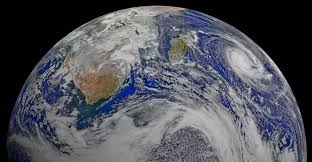
Breaking News
 Alaska Plots AI-Driven Digital Identity, Payments, and Biometric Data System
Alaska Plots AI-Driven Digital Identity, Payments, and Biometric Data System
 Another TRILLION Dollar NDAA Military Spending Bill!
Another TRILLION Dollar NDAA Military Spending Bill!
 The #1 Worst Protein in the World!
The #1 Worst Protein in the World!
 Battleborn 12V Battery: Major Safety Issue
Battleborn 12V Battery: Major Safety Issue
Top Tech News
 Build a Greenhouse HEATER that Lasts 10-15 DAYS!
Build a Greenhouse HEATER that Lasts 10-15 DAYS!
 Look at the genius idea he came up with using this tank that nobody wanted
Look at the genius idea he came up with using this tank that nobody wanted
 Latest Comet 3I Atlas Anomolies Like the Impossible 600,000 Mile Long Sunward Tail
Latest Comet 3I Atlas Anomolies Like the Impossible 600,000 Mile Long Sunward Tail
 Tesla Just Opened Its Biggest Supercharger Station Ever--And It's Powered By Solar And Batteries
Tesla Just Opened Its Biggest Supercharger Station Ever--And It's Powered By Solar And Batteries
 Your body already knows how to regrow limbs. We just haven't figured out how to turn it on yet.
Your body already knows how to regrow limbs. We just haven't figured out how to turn it on yet.
 We've wiretapped the gut-brain hotline to decode signals driving disease
We've wiretapped the gut-brain hotline to decode signals driving disease
 3D-printable concrete alternative hardens in three days, not four weeks
3D-printable concrete alternative hardens in three days, not four weeks
 Could satellite-beaming planes and airships make SpaceX's Starlink obsolete?
Could satellite-beaming planes and airships make SpaceX's Starlink obsolete?
Private Companies Are Building an Exoskeleton Around Earth

In 1957, a beach-ball-shaped satellite hurtled into the sky and pierced the invisible line between Earth and space. As it rounded the planet, Sputnik drew an unseen line of its own, splitting history into distinct parts—before humankind became a spacefaring species, and after. "Listen now for the sound that will forevermore separate the old from the new," one NBC broadcaster said in awe, and insistent that others join him. He played the staccato call from the satellite, a gentle beep beep beep.
Decades later, we are not as impressed with satellites. There have been thousands of other Sputniks. Instead of earning front-page stories, satellites stitch together the hidden linings of our daily lives, providing and powering too many basic functions to list. They form a kind of exoskeleton around Earth, which is growing thicker every year with each new launch.

 First totally synthetic human brain model has been realized
First totally synthetic human brain model has been realized Mach-23 potato gun to shoot satellites into space
Mach-23 potato gun to shoot satellites into space

